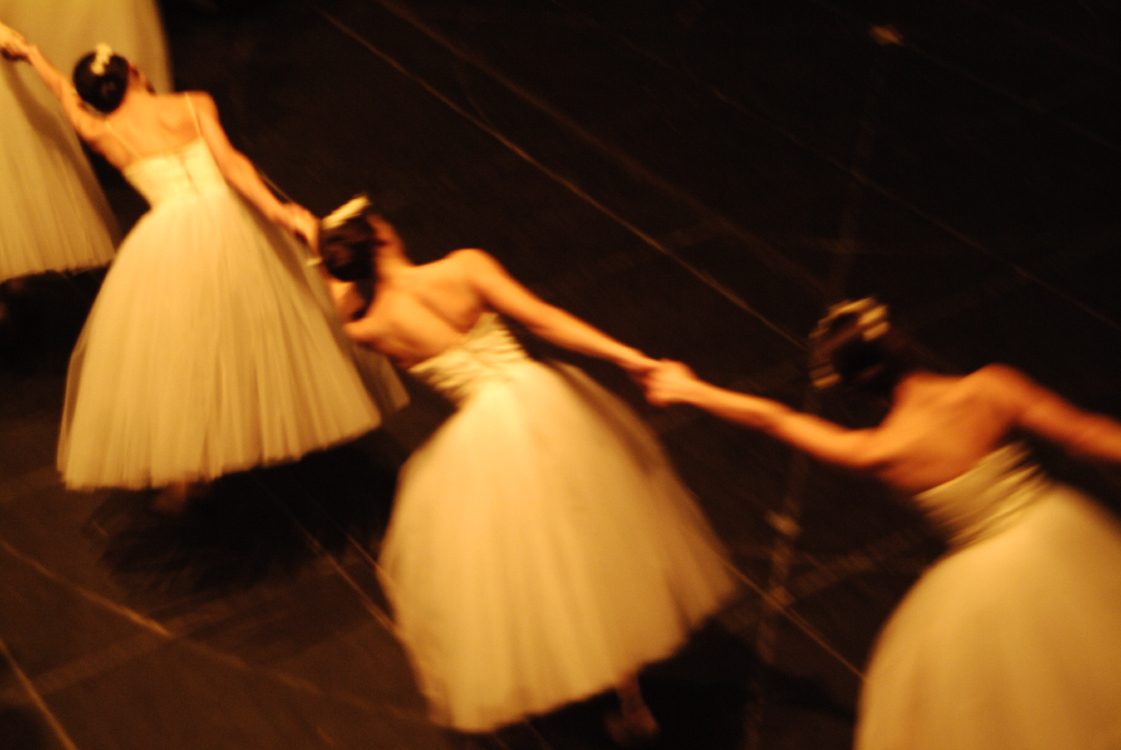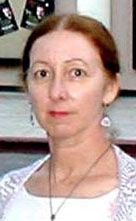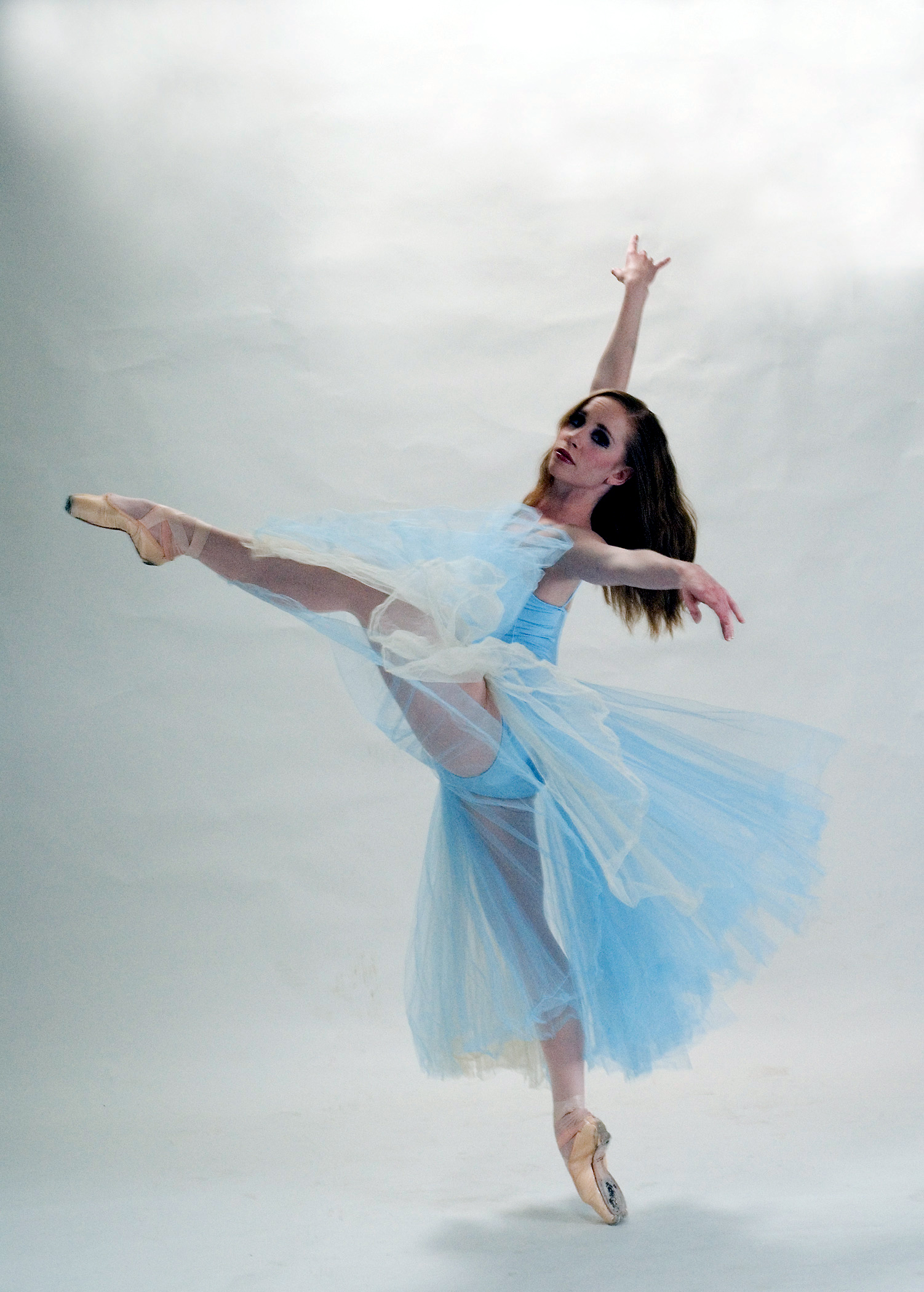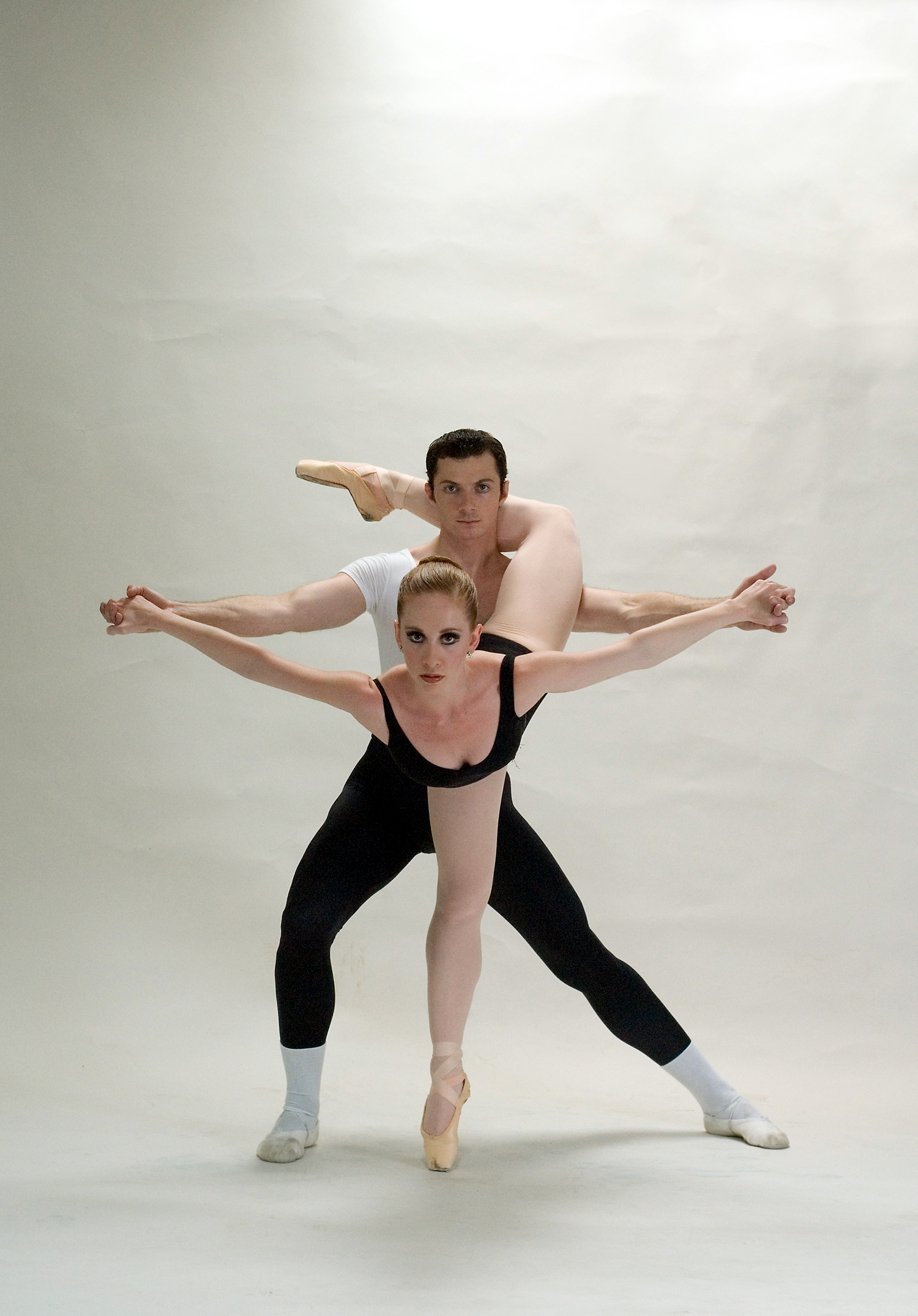 Dance~The Jewish
C~o~n~n~e~c~t~i~o~n Dance~The Jewish
C~o~n~n~e~c~t~i~o~nby Sheila Orysiek |
 |
San Diego finally has a classical ballet company that is worthy of the name
City Ballet of San Diego performs Balanchine at the Spreckels Theater
 SAN
DIEGO— The City Ballet of San Diego chose Serenade; Agon; and
Divertimento No. 15 which need not only several artistically, stylistically
and
technically capable dancers, but as important need to have strength in the
corps de ballet, and this shows the ever increasing depth in the company's roster.
SAN
DIEGO— The City Ballet of San Diego chose Serenade; Agon; and
Divertimento No. 15 which need not only several artistically, stylistically
and
technically capable dancers, but as important need to have strength in the
corps de ballet, and this shows the ever increasing depth in the company's roster.
There has been discussion in the dance community as to whether the Balanchine Trust is setting its imprimatur a tad too easily on companies wishing to incorporate the Balanchine repertoire. Whether that is true in the aggregate, I’m not sure, but it certainly isn’t true in this case. City Ballet of San Diego earned that stamp of approval Saturday evening, May 12.
Ariana Samuelsson in
Serenade Dale Stokes
Serenade
There is simplicity to perfection –
cleanliness devoid of the need for ostentation. From the spontaneous gestures
Balanchine noticed in his students, for whom
this ballet was choreographed, to Karinska’s ghost of a skirt, lingering and
elongating the flow of movement, Serenade has long ago taken its place among
the classics of the ballet repertoire. Never knowing how many of his part time
dancers would turn up for rehearsal, Balanchine couldn’t arrange them in
straight lines and so the slightly off symmetry construction for seventeen women
in the opening tableau was the serendipitous result.
When he saw the dancers
shield their eyes from the light, he kept the
gesture
and it became as recognizable
and iconic as the fluttering arms of
Odette in Swan Lake. The dancer who ran in late and the girl who fell down are
now immortalized in the choreography. How wise of Balanchine to incorporate the
spontaneity of life at the moment, which keeps it alive for us today, seventy-
three years later. And last night it continued to live through City Ballet of
San Diego’s performance.
This was a Serenade to melt the heart. One quickly became immersed in the magic realm of Balanchine and Tchaikovsky, the seemingly simple synchronism of the dancers belied the challenge that such symmetry demands. These dancers showed by ease and spirit, legato and attack, together and alone, they are worthy of the inheritance.
The difficult moment when the woman is turned on pointe in arabesque by the man rotating her leg from beneath was carried through with aplomb by her, though his hands were slightly fussy – or at least made his effort obvious. A small matter of but a moment.
The swirling froth of
dancers circling the stage in piqué turns was exciting. Attack never lost its
shape, speed didn’t cheat technique. One could feel the old love between music
and choreographer and through this group of dancers – the love affair twixt
music and dance. Even in the allegro sections the dancers kept the legato
quality which echoed back to the sweeping theme of the music.
Ariana Samuelsson especially has this quality. She chooses her moments and fills
them completely, only moving on when the music compels her. A company which can
bring forth such a performance of this hallmark ballet is to be treasured.
Agon
 Men
are not second class citizens in this Company and "Agon" gives them an
opportunity to give us pleasure – and that they did. They caught the quick
structure changes inherent in Balanchine’s choreography. Pulling back while in
arabesque to full weight on the standing heel and flexing up the supporting foot
– against all the classical “rules” of the ballet – they made it look intrinsic
to the dance rather than outside the classic norm.
Men
are not second class citizens in this Company and "Agon" gives them an
opportunity to give us pleasure – and that they did. They caught the quick
structure changes inherent in Balanchine’s choreography. Pulling back while in
arabesque to full weight on the standing heel and flexing up the supporting foot
– against all the classical “rules” of the ballet – they made it look intrinsic
to the dance rather than outside the classic norm.
The women easily displayed
the nuanced epaulement (shadings of the shoulder and upper torso) and saucy hips
organic in Stravinsky’s music which Balanchine realized into movement. Of
particular note in the pas de deux, time and again line and curve matched body
to body. She
Ariana Samuelsson and Ivan Bielik in "Agon"
beguiled him with glance and gesture, he met her challenge and the end result
was a fine display of technical, musical and stylistic communication.
Divertimento No. 15
The opening scene of the women in white and yellow cream tutus, ornamented with sky blue bows led into another Balanchine kingdom: more classical, more into Balanchine’s Russian heritage. Marrying his athletic technical demands to the delicacy of Mozart’s composition is a test of any dancer and any company.
There was a slight
disagreement among the women as to the hand distance placement in port de bras
en haut (arms over the head). I was taught it was eye distance apart, but some
think it should be head distance apart. Whatever one decides, that decision
should be part of the discussion. For the men, the disagreement was in port de
bras
demi un bas (arms half low in front). The women don’t have the demi un bas
problem because width of tutu is the final arbitrator. Other than that, the
corps de ballet and the principals, were truly attentive to detail without
making it an observable issue, it’s now intrinsic to their ability.
The Company’s women have mastered the secret of almost silent pointe shoes. This detail, like most details, becomes part of the whole experience for the audience. And so, there came a time during this last ballet, when the dancers floated through the world of Mozart and Balanchine, the audience was completely silent, no coughings, no stirrings, and we were all part – all able – to move into the magic realm of a theatrical experience for which we hope time and again when attending a performance. It’s the reason we go.
* *
H.L. Mencken said “People get the government they deserve.” In this case, San Diego needs to realize that it finally has a classical ballet company, and I hope it deserves it. Steven Wistrich, artistic director, and Elizabeth Rowe-Wistrich, resident choreographer, have given it birth; the city needs to feed it.
Program notes while generally complete, were not always clear as to which man partnered which woman. Rather than mistake one dancer for another I’ve chosen not to mention any. A pity – they deserved mention. The music was taped and once again I am grateful for its level of aural comfort.
Principals: Coatney, Samuelsson, (Janica) Smith, Bielik, Bowman, (Mira) Cook, (Natalie) Cook, Risi, Kirn
New York City Ballet, George Balanchine: these are names familiar to everyone interested in the performing arts and even recognizable to many with only a passing glance at the arts section in the newspaper. But behind great names there often exists other names or two that do not claim as much of the spotlight, but enable the headlines nevertheless.
Such a name is Lincoln Kirstein: scion of a wealthy Boston family, an author of several books on ballet history and biography, arts collector and as British critic Clement Crisp wrote:
“He was one of those rare talents who touch the entire artistic life of their time. Ballet, film, literature, theatre, painting, sculptor, photography all occupied his attention."
This Jewish philanthropist was the “enabler.” It was he who in 1934 tapped an unemployed, Russian émigré, George Balanchine, on the shoulder and offered to bring him to New York City, found a company – and at Balanchine’s insistence – a school. The aim was to produce a first rate American ballet company with first rate American dancers. Both men brought to fruition a dream in a dismal landscape that had been American classical dance.
When Balanchine died in 1983 he left behind a new ballet vocabulary and a roster of ballets that are now danced by just about every great ballet company in the world. To guard this legacy the Balanchine Trust carefully assesses the capabilities of any dance company that wishes to present anything from the Balanchine repertoire. It’s not just a matter of guarding the copyright privileges, but of making certain that the work will be presented by those capable of doing so and within the framework the choreographer designed. A member of the Trust comes to the company’s studios, sets the ballet, and comes back to assess the rehearsed product.
It is to City
Ballet of San Diego’s credit that the Balanchine ballets are part of the
company’s repertoire - they have passed the “test.” In a sense, the hard
work of a Jewish family connected with City Ballet—artistic director Steven
Rowe-Wistrich; his wife, Elizabeth Wistrich, the resident choreographer, and their
daughter, Arianna Samuelsson, a principal dancer—is another form of philanthropy
to the community.
Which brings us back to Lincoln Kirstein, Jewish philanthropist and artistic
idealist. It is he to whom we owe the initial debt – for his vision in looking
at a young George Balanchine and seeing more than was obvious to others. He not
only financed, but also lent his own artistic view and guidance to create the
legacy seen tonight.
This month we are celebrating the centenary of his birth.